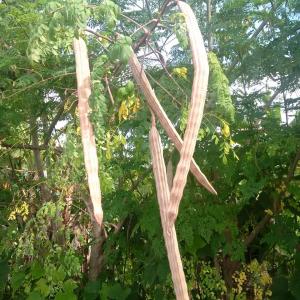News Information
- NEWS_POSTED_BY: Wilfrid Mésadieu
- NEWS_POSTED_ON: Jan 16, 2015
- Comments : 3
- Views : 1401
- Likes : 1
- Category : Haiti News
-
Description :
AMECON 2000 and the Réseau Agro-Entrepreneur du Centre encouraged the formation of a working group of stakeholders in civil society, farmers' associations, with the support of the Firm Search GCRD, offers nation strategies to take advantage of the nutritional, environmental and economic virtues of this miracle tree called Moringa
We are not the only ones interested in the cultivation and use of Benzolive (Moringa) because there are many other organizations and institutions involved in development in general and food security in particular that interests them whose MSPP which is a contribution to nutrition policies, namely:
- Promotion good eating and nutritional practices that will benefit 1 million children under 5 and their mothers.
- Improvement consumption of vitamins and minerals through food fortification and salt iodization. Fortification benefit the entire population.
- Prevention of malnutrition and management of acute malnutrition hitting 1 million children under 5 years and 360,000 malnourished children.
- Promotion consumption of local products.
- Location : Croix-des-Bouquets, Ouest, Haiti
Overview
This pilot project goal PROMOTE and SUPPORT culture and the use of Moringa in the Central Plateau and the rest of the country, to contribute to the eradication of hunger and malnutrition and poverty.
This implies a multi-sectoral and holistic action concerning the knowledge, production, use, marketing.
Three axes of Moringa Project
This project wants to enhance the nutritional, environmental and economic benefits of using Moringa, and it is positioned on three areas:
- nutrition
- environmental
- Economy
This involves coordinated action of the various entities of civil society, relevant authorities and stakeholders, with special attention to communication and dissemination of messages related to Moringa incitgatifs in Haiti
Traditional use
Moringa is used mainly in semi-urban and rural areas as a vegetable, in sauces, soups and added to the starchy foods such as corn and rice, sorghum, ect ...
Public perception of Moringa
We can assume that 40 to 60% of Haitians are aware of it but do not hold sufficient information on its potential. On an individual basis, most people do not hesitate to taste it or even if they are in use.
The level of commercial culture, the rural population maintains a distrust reflex: it would not be the first speech that will offer them to produce a sector for which there have been no stable market.
Nutritional axis
Approaches based on feeding, using local food sources rich in micronutrients, are the most appropriate strategies and enduring fight against nutritional deficiencies. In Haiti the protein-energy malnutrition (acute and chronic malnutrition) is added the problem of micronutrient deficiencies (especially vitamin A deficiency, calcium, iron and iodine). Moringa leaves have many assets in the fight against all types of malnutrition, such as:
- Proven ability to improve the nutritional status and health
- More readily accepted and richer in micronutrients that vitamin supplements
- Economic, accessible and self-reproducing
- Local production
